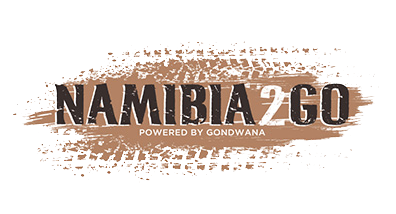𝐇𝐨𝐧𝐨𝐮𝐫𝐢𝐧𝐠 𝐭𝐡𝐞 𝐬𝐩𝐢𝐫𝐢𝐭 𝐨𝐟 𝐭𝐡𝐞 𝐡𝐨𝐫𝐬𝐞𝐬
After our successful series, Bittersweet Karas Home, that has been enjoyed by thousands of interested followers, we’ve decided to continue in the same vein with the (now out of print) book ‘Wild Horses of the Namib Desert’, a story that began 110 years ago at the time of World War One.
Their origins steeped in mystery, the wild horses in the Namib Desert have captured imaginations and touched hearts. These resilient animals have survived in the desert for more than a century and have over the years become a major tourist attraction in southern Namibia.
Join us every Sunday as we share the wild horses’ journey with you.
𝐅𝐨𝐫𝐞𝐰𝐨𝐫𝐝
‘There’s something about the outside of a horse that is good for the inside of a man.’
(Winston Churchill)
The concept for the book ‘Wild Horses in the Namib Desert’ had been incubating for many years in the hearts and minds of Manni Goldbeck and Telané Greyling, who share an interest and passion for these animals.
There has been much speculation regarding the horses’ origins. The book seeks to clarify the origins of the wild horse population living in the Namib Desert as well as to enlighten readers about their behaviour and more recent history. It also answers the innumerable questions that are continually asked about these intriguing creatures.
The historical research, essential in shedding light on the mysterious origins of the horses, was undertaken by Manni Goldbeck who researched and identified the more plausible theories relating to the events that initiated the Garub wild horse population.
While Manni delved into the history, the understanding of the nature and behaviour of the Garub horses stemmed from Telané Greyling’s (PhD Zoology) many years of field research and resulting doctoral thesis. She has monitored the horses continuously for over thirty years.
Freelance writer, Ron Swilling, created a text from the material giving it a breath of life.
Finally, from the love for the horse and all things wild, the book was born.
𝐈𝐧𝐭𝐫𝐨𝐝𝐮𝐜𝐭𝐢𝐨𝐧
Here I am, wild and free
‘This is me . . .
There’s nowhere else on Earth I’d rather be.’
It’s a new day
A scattering of stones extends into an expansive desert landscape of gravel plains streaked with short yellow grass tufts, dotted with clumps of hardy blue-green shrubs and edged with inselbergs and purple-blue mountains.
The soft golds and pinks of the dawn fade to bleached yellow as the summer sun rises and begins its onslaught on the morning land. Jackal calls resound across the plains and then recede with the darkness of the retreating night. We are one of the first groups of horses to arrive at the Garub waterhole as the day focuses into its crisp contours. I drink with my mares and foals and then we move off to the side as other horse groups appear in the distance, trotting with sand clouds rising from their hooves – manes and tails flying, youngsters bucking and kicking, or walking in sedately to the water.
We move in a wave, an organic flow, a continuum of those arriving and disappearing over the horizon. Horses whinny, roll in the sand encircled by dust haloes and streaked with the ephemeral morning light, lie on the ground or stand statue-like under the merciless sun. Oryx with their sceptre-like horns approach the water to drink, a springbok delicately makes its way on the rocky soil, Namaqua sandgrouse fly over and call with their distinctive lilting cadence and pied crows perch menacingly on the roof of the viewing hide waiting for opportune moments.
The blue of the sky has already set the colours for the day when a trail of dust heralds the arrival of a tourist vehicle to the viewpoint. My black mane is hot against my neck and the warmth of the day is spreading its fiery tendrils. A family alights from the vehicle and takes cover in the shade of the hide, unaccustomed to the harshness of the Namibian climate. They admire our wild beauty, our bay and chestnut colours, shining as if burnished by the sun. Looking around at the seemingly barren land before them and feeling the heaviness of the day already beginning to burn, they wonder aloud if there is sufficient food for us to eat.
I hear the strange bubbling words of the people as I look out onto the gravel plains and my home, the Namib Desert. We have adapted over a period of a hundred years from the time of our domesticated ancestors to this terrain that appears unforgiving yet offers us life and a home. We have formed family groups and bonds as Equus groups naturally do. There is an adequate supply of food. The dry years come in cycles, regulating our numbers. This is what we Namib horses know. This is who we are. We have no knowledge of fences and stables and the ways of man, or the lonely life away from our family groups. We know the summer heat, the winter cold, the powerful easterly winds that blow unwaveringly through the plains. We are accustomed to the oryx and ostrich, wary of the hyaena, and we know the grasses to eat and the place of water. We are at home, wild and free, under the blue African sky and scintillating stars of the Namib Desert.
This is our story.


.png)
.jpg)
.jpg)




.png)

SUBMIT YOUR COMMENT